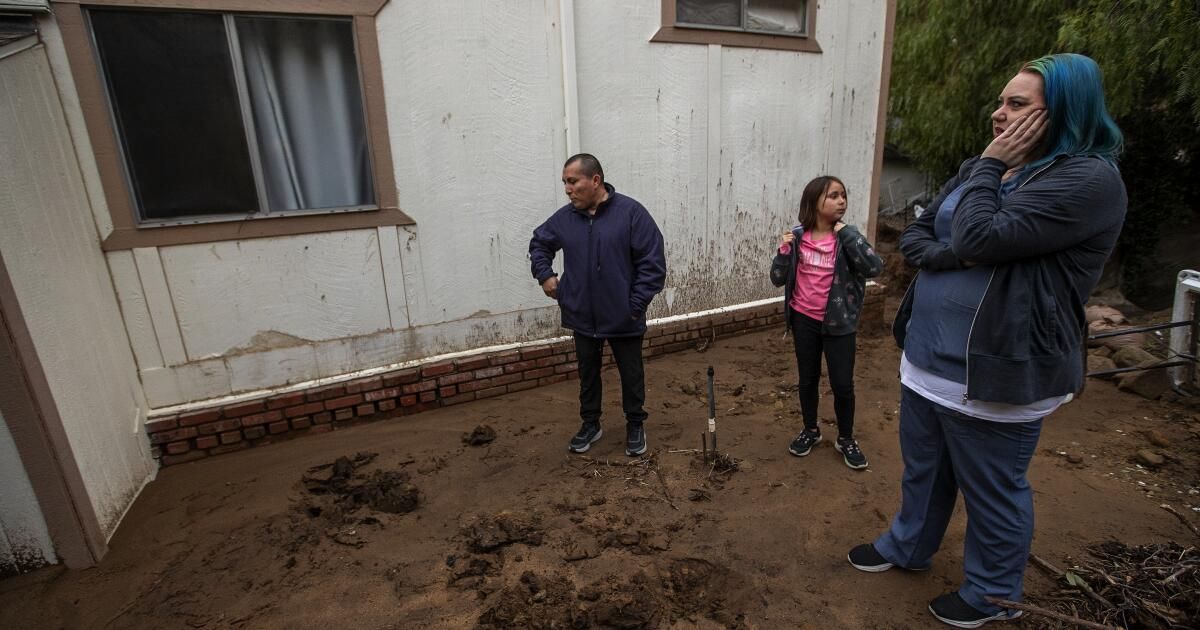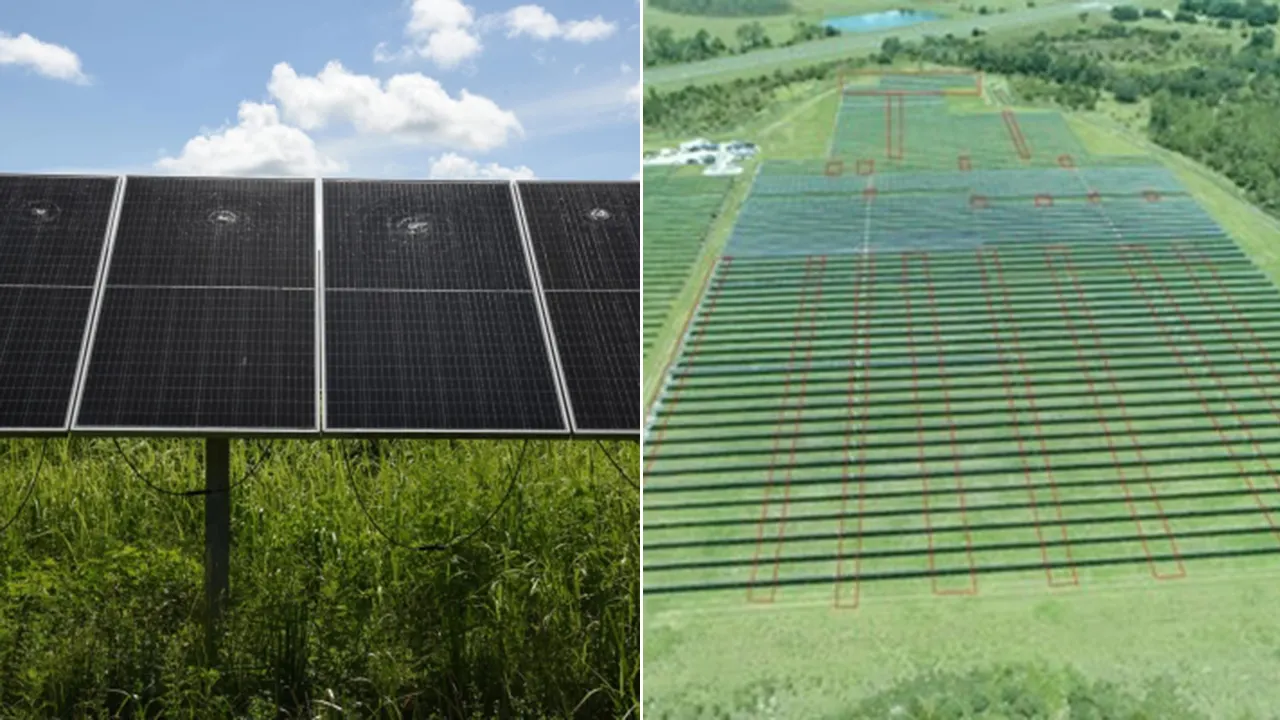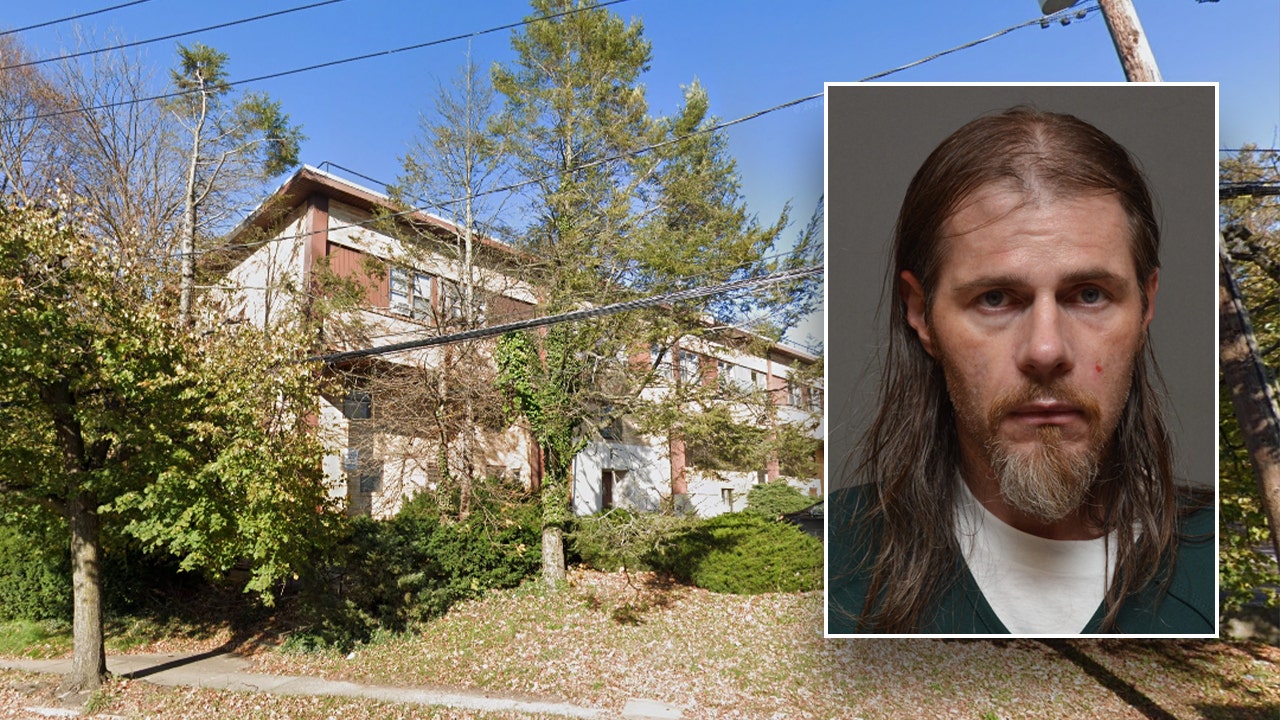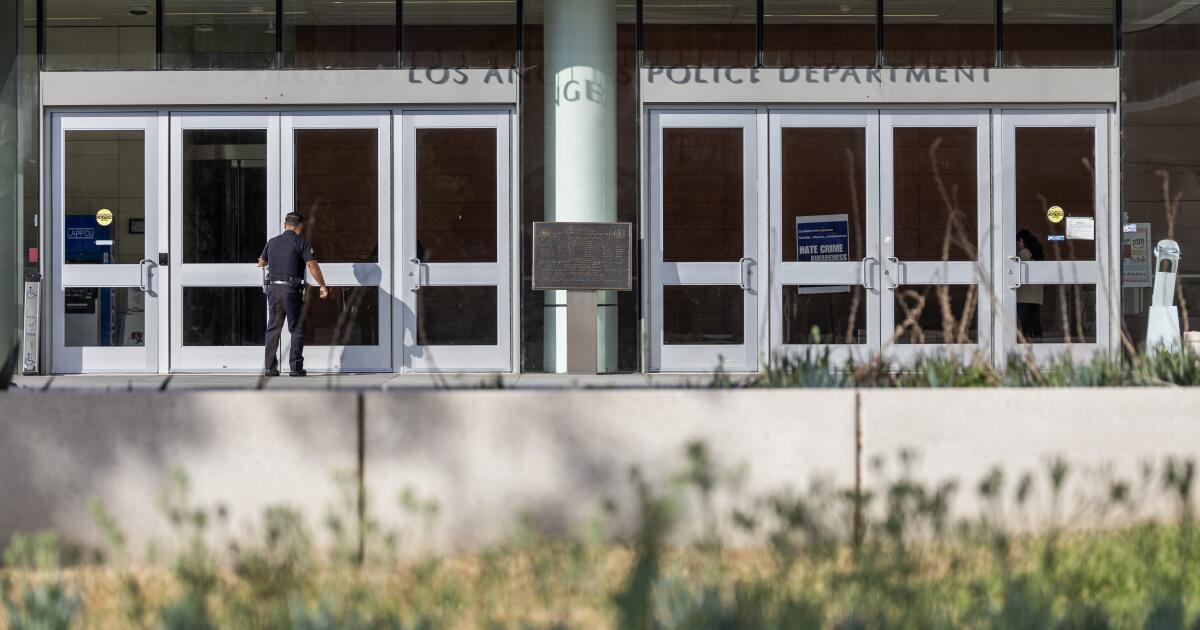For the record:
11:33 am February 13, 2024A previous version of this article stated that the storm that damaged Dakota Rivas' home began on January 5. The storm began on February 5.
Dakota Rivas was getting out of the shower the night of Feb. 4 when she heard a dull roar behind the house her family rents in West Hills. A rapid landslide had begun on the rocky hill behind the property, overwhelming a clogged drain, backing into the house and sweeping away the yard where her children and dogs play.
“It sounded like thunder or something big rolling,” the 32-year-old said, surveying the damage after the rain finally stopped last week. “I went to check what it was and saw a bunch of mud and water flowing into our driveway.”
He pointed to a waterfall still flowing down the hillside.
“This waterfall behind our house,” he said, “wasn't here before.”
For many Southern Californians, this is the new normal. Homes once prized for their hillside views and apartment complexes on low-lying urban streets are increasingly threatened by severe flooding, landslides and strong winds. Wildfires and earthquakes have long been the focus of concern, but the consequences of wet storms are only now beginning to generate similar levels of alarm.
The Rivas had renters insurance when they lived in a house a few doors away. But when they moved in November, they couldn't get a policy because of the location. What has been called the “disaster insurance gap” has become an increasingly serious concern in recent years. Even those who have insurance but live in endangered locations often cannot obtain sufficient policies to protect their residences and belongings.
Maleeyah looks up the hill behind her house.
(Mel Melcón / Los Angeles Times)
Rates for homeowners and renters with flood insurance policies have lagged as more of Southern California has become subject to extreme weather patterns driven by climate change. In the eight Southern California counties that were under a state of emergency during the recent storm, only 52,820 homes and businesses were covered by flood policies, according to the National Flood Insurance Program.
Homeowners, renters and insurance providers have been slow to adapt to climate change, leaving families across the South with little financial protection against the wind and water hitting their doors.
“They just don't offer renters insurance in this area anymore, mainly because of the fires,” Rivas said. “We have never had flooding here before. “It just wasn’t even something anyone thought about.”
***
The mud continued to slide for several days. As he gained power that first night, Rivas and her husband, Walter, 42, borrowed shovels from neighbors and dug in the flowing dirt for hours, trying in vain to clear a canal around their house.
“We were just fighting Mother Nature and we were at her mercy,” Walter said. “And we were losing.”
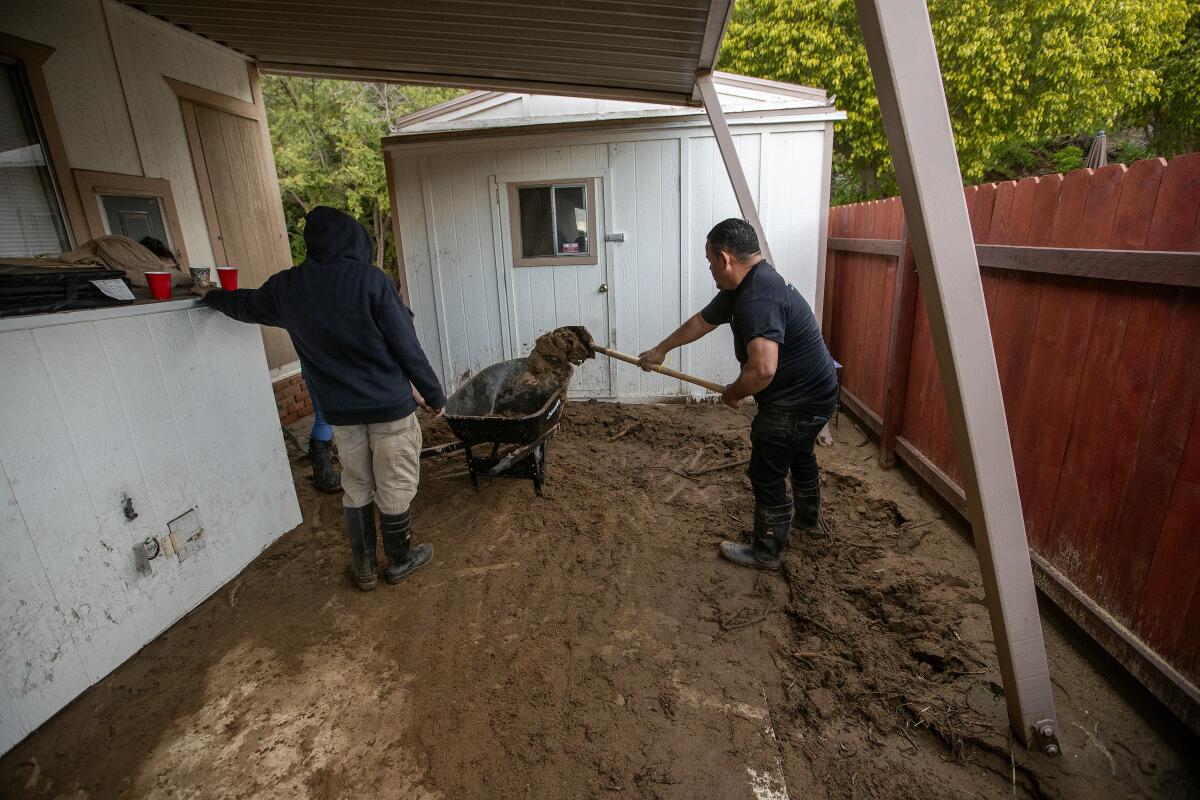
Workers remove mud from the Rivas's driveway.
(Mel Melcón / Los Angeles Times)
Ultimately, the Rivas, who have a son, Isaac, 10; a daughter, Maleeyah, 9; a Shih Tzu named Polly Pocket; and a chihuahua named Mia, they were lucky. Their efforts, along with those of firefighters who cleared the blocked drain the next day, paid off and their two-bedroom home was damaged but still standing. But his well-tended garden and many of his personal belongings were destroyed.
The couple hopes their property management company will quickly fix up the house and pay to replace some of its things. Last week, Dakota started a GoFundMe campaign that is well below its goal of $3,000. She wishes she had insurance to cover the costs that are rising after the storm.
Even if the Rivas clan had managed to obtain insurance, their plan likely would not have covered much of what they lost, since most standard renters policies do not cover flood damage.
It's the same for most homeowners. For those in certain high-risk flood areas and who have mortgages, flood insurance is required.
For people whose homes are located in thousands of federally designated flood zones across the country, the U.S. government offers policies through the National Flood Insurance Program. But payments under the program are capped at $250,000 for the structure of a typical home and $100,000 for its contents. Beyond that, the insured are on their own.
Nationally, about one-fifth of insurance claims for flood losses are made outside designated flood zones, according to Janet Ruiz, spokeswoman for the Insurance Information Institute, a national industry group. In other words, areas that are not typically known for flooding may still be at risk of significant damage. In Los Angeles County, according to Ruiz's group, there are more than 3.5 million housing units and fewer than 20,000 flood insurance policies.
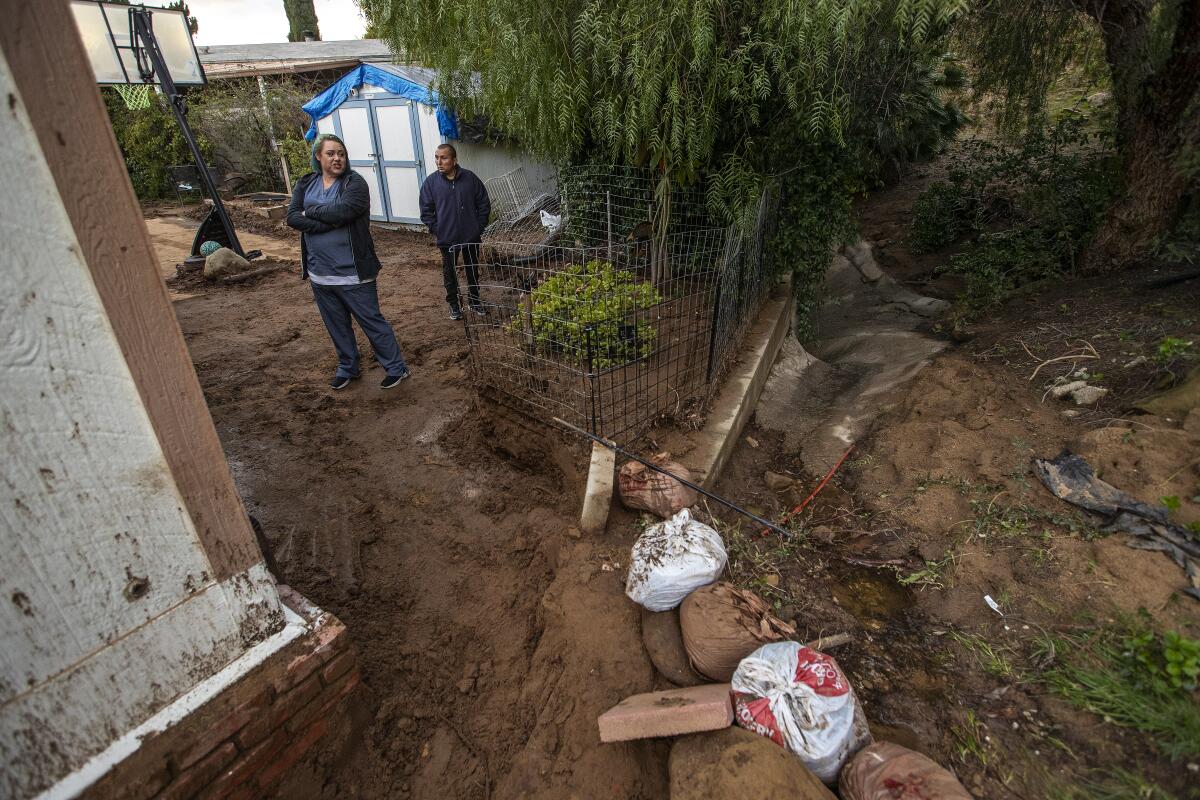
The Rivas at home after the storm.
(Mel Melcón / Los Angeles Times)
That means a couple of days of heavy rain can cause economic devastation.
“Most insurance policies, generally, unless you have flood insurance, don't cover groundwater,” said Mark Eaton of MSB Disaster Recovery in Agoura Hills. “Right now, we have people with basements with water that has saturated their pumping systems, but it's not covered.”
***
At the start of last week's storms, water began seeping through the roof of a unit at a sprawling apartment complex in Santa Clarita, and continued seeping for three days. On Thursday, the paint on the living room ceiling was blistered and cracked. On one side of the apartment there was a rolled-up dark blue rug and much of the furniture was wrapped in plastic.
The homeowner called Joel Moss, director of business development for Paul Davis Restoration, a national fire, mold and water cleanup and restoration company, to help.
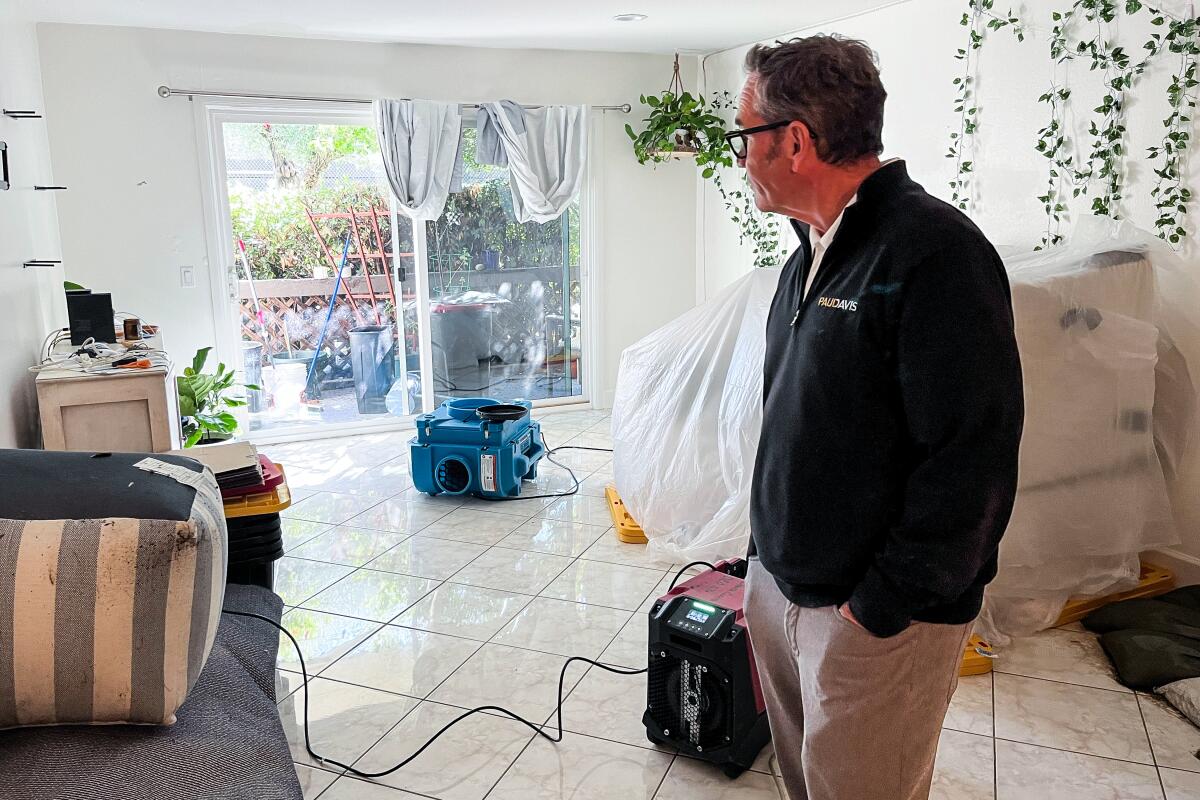
Joel Moss, director of business development at Paul Davis Restoration in Santa Clarita, in an apartment that was damaged by rain last week.
(Connor Sheets/Los Angeles Times)
“There was easily so much water on the floor,” Moss said, keeping two fingers a few inches away as he pointed to the living room's white tiles. “I was walking out the front door.”
Over the hum of an industrial-strength air purifier and dehumidifier, Moss said tenants had to vacate the unit quickly, leaving food and dishes on the counter. It will probably be weeks before the apartment is habitable, he said, and in the meantime, its occupants need a place to stay.
Additional living expenses are covered by many homeowners and renters insurance policies, but usually not by flood policies. Many people whose homes receive water have to pay out of pocket for a hotel or Airbnb.
The cost of temporary lodging is just one of many factors renters and landlords can consider when deciding what type of insurance to obtain. Insurers offer menus of coverage options for damage sustained in almost every type of natural devastation, from hurricanes to earthquakes.
But one type of disaster that is typically not included in even the most expensive and expansive policies is landslides. Entire hillsides of Southern California have disappeared in recent years, and last week's storm triggered several severe flows and hundreds of smaller ones. Ruiz said landslide protection is typically sold separately, as part of a “difference in conditions” policy.
“Not many brokers or insurers sell it,” he said. “And it's expensive if they do.”
***
The end of a catastrophe is just the beginning when it comes to insurance claims.
Insurance companies are incentivized to deny or minimize payments, according to Omar Ochoa, a Texas attorney who specializes in property damage claims. He said companies are moving toward policies that give them more ways to avoid losses, which means owners must advocate for themselves.
“People don't have to accept a bad decision in a claim,” Ochoa said. “To some extent, the insurance industry relies on people not to complain or question its claims decisions.”
Ochoa suggests that policyholders consult with an attorney if they believe a claims adjuster is shortchanging them. Ruiz said customers can also go directly to their insurers and negotiate with the claims adjuster.
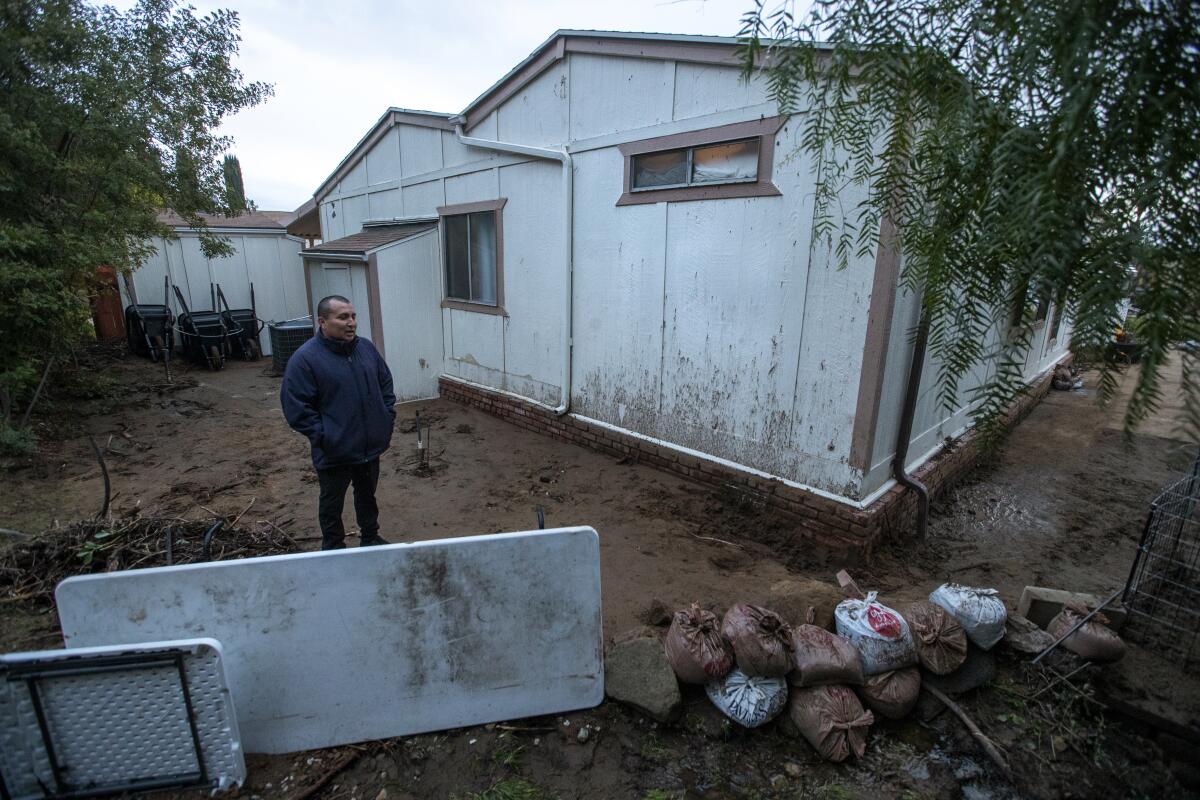
Walter examines the damage.
(Mel Melcón / Los Angeles Times)
“That's normal,” Ruiz said. “It often surprises people who have claims that they consider too low.”
It's impossible to insure every risk for your home, Ruiz added, so it comes down to evaluating the risk of a particular calamity against the cost of a monthly premium. For Southern Californians who can find and afford coverage, that calculation may tip in favor of having flood insurance after last week's storms.
“We had been so focused on the wildfires and the drought that it was hard to imagine flooding, so many Californians didn't have flood policies,” Ruiz said. “We need to change course.”
Times reporter Sam Dean contributed to this report.

